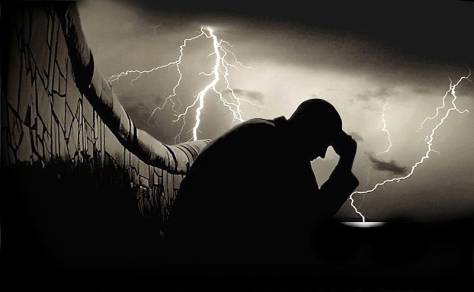
My nephew, Drew, committed suicide on December 15.
The pastor at his memorial (which happened yesterday) said this: “People who commit suicide think that they are putting an end to their pain. This is not true. They are simply passing that pain onto everyone they leave behind.”
Bingo.
Drew’s suicide touches everyone differently, and we all cycle through the typical stages of grief.
For me, there’s been a lot of anger, self-loathing, self-disgust and discontent. A clinician would, without doubt, say that the stage of depression has been reached. I, on the other hand, do not subscribe to the pathologization of the natural descent cycle — but I do see that a descent has occurred and I’m endeavoring to embrace it for all it’s worth.
The Buddha would say that this mess of reactivity is due to excessive identification with the body, and he would be correct.
I am still in the body, and unless I consciously attain “Right View,” I definitely identify my body as “me.”
The body is not only physical, but it is mental and emotional as well.
The emotions are what assail me now.
So, I turn to a pair of companions who bring comfort through thick and thin: astrology and the Bible.
What does astrology say?
Astrology says that transiting Mars, the Warrior, planet of anger and physical vitality, has been moving directly over Pluto, the Dark Mother, planet of death and transformation, in my natal chart.
Mars and Pluto happen to be ruling planets in my chart. This means that, whenever they are “lit up” by mutual connection, I am thrust into processes that go directly to the “core issues” in my life.
Astrology says that Mars conjoining Pluto guarantees at least a month’s worth of physical, mental and (especially) emotional INTENSITY — which, of course, exceeds the boundaries of rationality, descending my emotions into the deepest, darkest recesses of existence.
My experience of what Astrology says includes the above-mentioned anger, self-loathing, self-disgust and discontent. I’m sure there are other things going on in my chart (i.e., Jupiter squaring Nodes and Saturn in the 7th, Uranus opposing Moon, and Pluto continuing to square Moon) that contribute to the seeming bottomlessness of the descent I’m in… but, for whatever reason, I can’t seem to find the lower floor, and I’m getting a little desperate.
What does the Bible say?
Here’s where I was led:
Eph 4:29-32 Let no corrupt communication proceed out of your mouth, but that which is good to the use of edifying, that it may minister grace unto the hearers. And grieve not the holy Spirit of God, whereby ye are sealed unto the day of redemption. Let all bitterness, and wrath, and anger, and clamour, and evil speaking, be put away from you, with all malice: And be ye kind one to another, tenderhearted, forgiving one another, even as God for Christ’s sake hath forgiven you.
So… the remedy for my corrupt communication, my grieving of the Spirit of God, my bitterness, wrath, anger, clamor, evil speaking and malice… is to forgive those who are on the receiving end of my projections, and to show tenderhearted kindness toward them — no matter how difficult it may be for me to get there from here.
Whew! Tall order!
And, yet… the forgiveness piece is something that’s worked wonders in my past… because, only through forgiving others am I able to receive forgiveness for my own loathsomeness.
Yes, I am inundated by explosive emotion right now.
I feel terrible about my reactivity and my frantic corruption of communication. I feel awful about ALL my shortcomings, the totality of which seems so obvious and exposed.
In this place, I can’t seem to get over the shortcomings I see in others — I want to blame them for the pain and suffering within me.
So… I forgive everyone who has ever “wronged” me — just as I forgive Drew for killing himself.
And… I pray that my own wrong-doing toward others is forgiven in kind.
* * *
Somewhere in all this grieving, there is a bottom floor.
May my feet touch down in that place as soon as possible.






